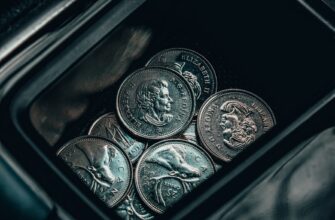Introduction: Why Crypto Safety Matters More Than Ever
With cryptocurrency scams surging 81% in 2023 alone, learning how to buy crypto safely isn’t optional—it’s essential. This guide walks you through security best practices that protect your investments from hackers, phishing scams, and exchange failures. Whether you’re buying Bitcoin, Ethereum, or altcoins, these actionable steps create a fortress around your digital assets.
Choose a Reputable Cryptocurrency Exchange
Your exchange is your first line of defense. Prioritize platforms with:
- Regulatory compliance: Look for licenses from bodies like FinCEN (US) or FCA (UK)
- Cold storage: 95%+ of funds should be offline
- Insurance coverage: Protects against exchange breaches
- Transparent fee structures: Avoid hidden withdrawal costs
- Positive user reviews: Check Trustpilot and Reddit communities
Top-tier examples include Coinbase (publicly traded) and Kraken (independent audits). Never use unregulated platforms offering “too good to be true” returns.
Fortify Your Account Security
Exchange accounts are hacker magnets. Lock down yours with:
- Generate 12+ character passwords using LastPass or 1Password
- Enable two-factor authentication (2FA) via Authenticator apps—never SMS
- Whitelist withdrawal addresses to prevent unauthorized transfers
- Use dedicated email with 2FA for crypto activities only
- Regularly review login activity and connected devices
Select Secure Payment Methods
Payment choice impacts both safety and fees:
- Bank transfers (ACH): Lowest fees, highest security (3-5 day settlement)
- Debit cards: Instant but 3-5% fees and purchase limits
- Peer-to-peer (P2P): Use escrow services only—never direct transfers
- Avoid credit cards: High fees + potential cash advance charges
Pro tip: Start with small test transfers under $50 to verify payment channels.
Implement Wallet Protection Strategies
Exchanges aren’t for storage. Move crypto to:
- Hardware wallets (Cold storage): Ledger or Trezor for long-term holdings
- Mobile wallets: Trust Wallet or Exodus for smaller, active balances
- Paper wallets: Offline printed QR codes (store in fireproof safe)
Always send a test transaction before moving large amounts, and triple-check wallet addresses—crypto transactions are irreversible.
Recognize and Avoid Common Scams
Crypto criminals use sophisticated tactics. Red flags include:
- “Guaranteed” returns or urgency pressures
- Fake exchange apps in official app stores
- Impersonator support accounts on social media
- Phishing emails with malicious links
- Unverified token “airdrops” requiring wallet access
Verify all communications through official channels—never share seed phrases or private keys.
Start Small and Scale Gradually
Begin with investments you can afford to lose—ideally under 5% of your portfolio. This allows you to:
- Test security protocols risk-free
- Understand market volatility without panic
- Refine your storage strategy
- Build confidence before larger purchases
Track all transactions in spreadsheets for tax compliance and security audits.
FAQ: Your Crypto Safety Questions Answered
Q: Is crypto safer than banks?
A: Crypto offers control but lacks FDIC insurance. Security responsibility falls entirely on you.
Q: Can I recover stolen cryptocurrency?
A: Extremely difficult. Blockchain transactions are permanent. Prevention is your only real protection.
Q: How often should I update security measures?
A: Review monthly: update passwords, check 2FA, revoke unused app permissions, and monitor transaction history.
Q: Are decentralized exchanges (DEXs) safer?
A: They eliminate custodial risk but require advanced technical knowledge. Beginners should start with regulated centralized exchanges.
Q: What’s the biggest security mistake beginners make?
A: Storing crypto on exchanges long-term. Always transfer to private wallets after purchase.
By implementing these layered security practices, you transform crypto buying from a risky gamble into a calculated, protected investment strategy. Stay vigilant, verify everything, and never stop learning—your financial safety depends on it.








